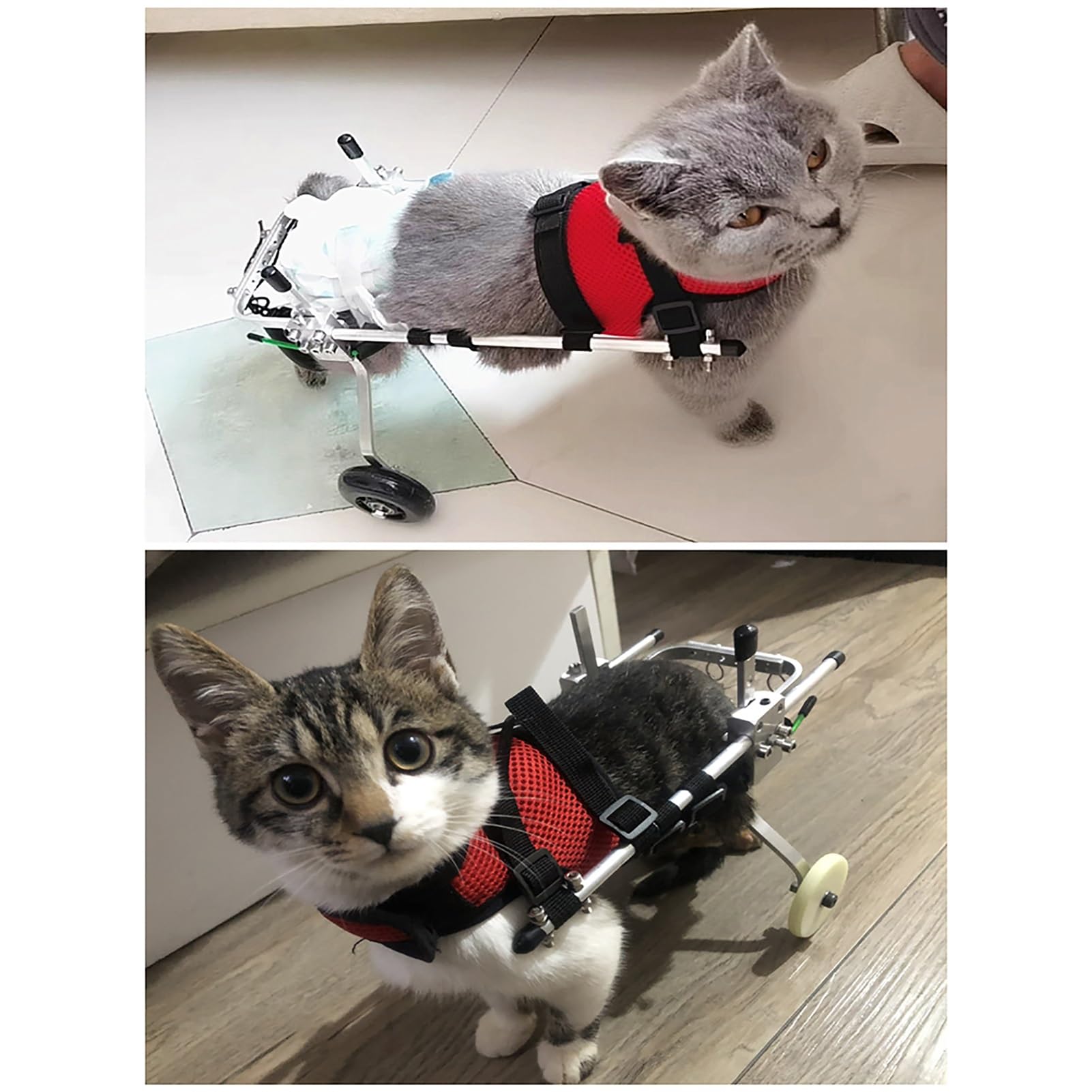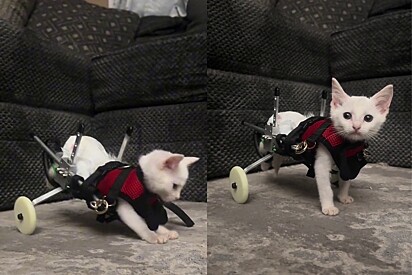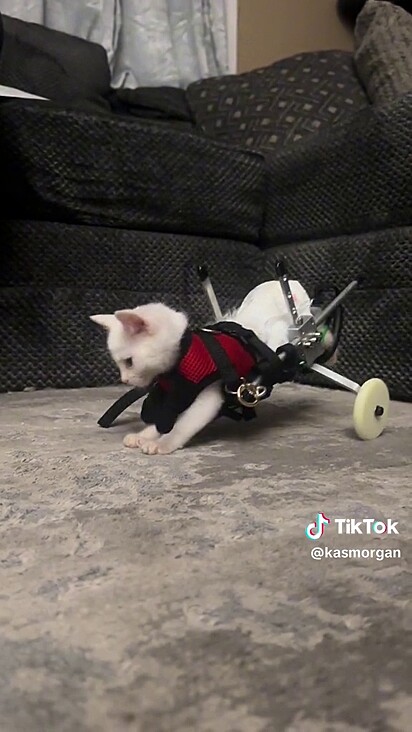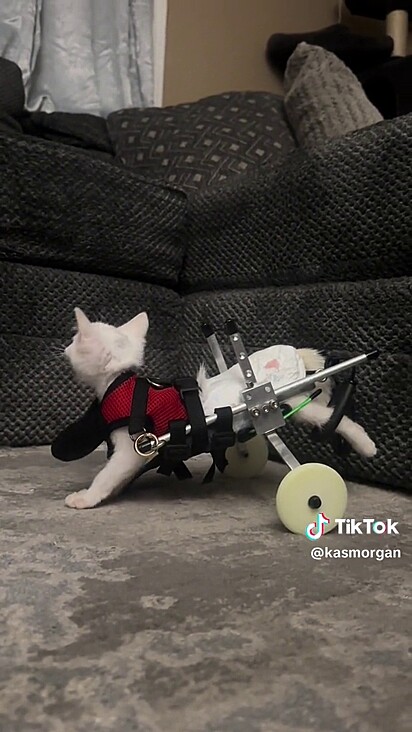“Sixteen Months of Courage. A Lifetime of Love.”.ly2047
Amy burst into the world like a spark someone forgot to contain — all wild red curls, glittery ballet slippers, and a laugh that felt like sunshine. She was the kind of child people remembered, even after a single meeting. Her energy filled rooms, her questions filled car rides, and her imagination filled every quiet moment with magic.
She loved ballet and mud puddles with equal passion. She danced in the living room wearing her favourite pink tutu, then marched outside to look for worms after the rain. She could bait her own fishing hook, beat her dad at card games, and charm store cashiers simply by handing them stickers “just because.”
Amy was seven — curious, mischievous, radiant.
But shortly after her seventh birthday, something subtle began to shift.
At first, it looked like clumsiness: she tripped more often, sometimes losing her balance.
Then her smile seemed uneven — one corner just a little slower to rise.
Then came a slight slur in her speech.
Her parents noticed.
Her teachers noticed.
But no one wanted to imagine what it might mean.

Doctors ran test after test.
Scans.
Measurements.
Neurological exams.
And then the room shifted — the way rooms do when devastating news is about to fall.
Diffuse Intrinsic Pontine Glioma.
DIPG.
Three letters that steal childhoods.
A tumour deep inside the brainstem.
Inoperable.
Untreatable.
Always fatal.
There is no cure.
There is only… time.
And suddenly, the world became smaller — hospital rooms, hallways, waiting rooms, medical jargon. Her parents sat holding hands, terrified of breaking apart.
Amy, though, did not understand the full weight of the diagnosis.
And so she continued to be herself — a burst of joy in a place filled with fear.

Radiation helped, at first.
For a brief season, the tumour shrank, giving her stolen moments of normal childhood.
She twirled again.
She laughed again.
She made bracelets for nurses and painted pictures to hang on the doors of other children’s rooms.
Her hospital room became the brightest one in the ward:
paper chains draped from the ceiling,
markers scattered everywhere,
music playing from a tiny speaker,
and Amy — always Amy — in the middle of it all, creating something for someone else.
“You need a card,” she’d say to the child beside her.
“You look like you’re having a sad day.”
She crafted love from construction paper and glitter glue.
Her parents watched her and wondered how a child so small could carry so much strength.

But DIPG is relentless.
The tumour returned — larger this time, more aggressive.
Her balance worsened.
Her speech softened.
Her smile slipped away, not because she didn’t want to smile, but because her body could no longer obey her heart’s commands.
And yet — she kept giving.
When she grew too weak to walk, she sat in her bed and made art.
When she struggled to talk, she whispered her love in the smallest breaths.
When she could no longer hold markers, she asked someone else to help her finish a card.
Amy endured every stage with a fierce quietness — a bravery far beyond her years.
Sixteen months after her diagnosis, surrounded by love, she slipped away.
The world dimmed.
Her parents broke.
Her community grieved.
The hospital staff cried openly in hallways.
A bright, fiery light had gone out.
Or so everyone thought.

In the months that followed, as her parents began the painful process of sorting through her bedroom, her books, and her cherished belongings, something unexpected happened.
Inside a drawer — a small folded note.
Inside a book — another.
Behind a pillow — another.
Tucked into a jewellery box — another.
Amy had left messages.
Tiny handwritten notes.
Little hearts.
Short sentences, often misspelled, always heartfelt.
“I love you, Mommy.”
“Daddy, don’t cry.”
“You’re the best family.”
“Look for rainbows.”
“Be happy.”
“Jesus loves you.”
“I’m okay.”

Some were scribbled on scrap paper.
Some were written on construction paper cut into shapes.
Some were drawings rather than words — stick figures holding hands, hearts with wings, stars.
Each note appeared at the moment they needed it most — when grief was raw, when missing her felt unbearable, when the silence in the house felt too loud.
Her love kept resurfacing, whispering into the cracks of their grief.
Amy had prepared her family the only way a child knows how:
with innocence, with hope, with love tucked into corners like hidden treasure.
Her parents found dozens of notes over the following months — some hidden so well it felt as though she had placed them there specifically for their worst days.
She had left behind a legacy not measured in years lived, but in hearts touched.

Amy’s story is more than a tragedy.
It is a testament to a child who refused to let cancer define her.
It is a reminder that joy can exist even in hospital rooms.
It is a reflection of how deeply a seven-year-old can love, how intentionally she can care for others, how fiercely she can live when given only a little time.
Her life was short.
But her impact is long.
Her spirit lingers in every note, every memory, every laugh her family now holds close.
Amy’s story isn’t only about how she died —
it’s about how she loved while she lived.
How she left pieces of herself so her parents would never feel alone.
How she filled the world with messages that still echo:
Be happy.
Don’t cry.
I love you.
Look for rainbows.
And in that way…
Pieces of Amy are still here.
A child’s light — shining on.
🌈💛
👉 Full journey continues in the comments.
Everyone is cheering for Scott: Kitten born without hind legs melts hearts by taking his first steps in a tiny wheelchair. ly694

Scott is a kitten who was unfortunately born without the use of his hind legs.
His condition moved his owner @kasmorgan , who decided to share his pet's progress on Tik Tok.
It all started when he was found on the street, near Kas's house, on August 10. When she noticed the puppy crawling, the woman made the only possible decision: to take him in.
In this way, a solidarity fundraising campaign began.
"I couldn't just leave Scott outside to fend for himself, so I brought him in to be safe. I bathed him to get rid of fleas and put him in a bed with a heating pad. I'll be happy to post any receipts from vet visits if I can raise enough to see this baby! Please follow me so I can build a following to start a breeder fund to financially support this sweet baby. It's going to be a long and expensive road ahead," Kas wrote in the first post about the kitten.
Internet users then embraced the cause and began helping Scott with treatments, snacks, gifts and even a wheelchair.
Then on August 19th the long-awaited video was published by the guardian, it was the baby taking his first steps and learning to use his car seat donated by internet user Cristle.
At first, Kas needed to help and encourage his son, who still doesn't understand the real purpose of the car seat since he was born with the disability.
But with patience, love, and dedication, Scott is getting closer to his 'freedom' every day. It's true that this chair won't be for life, as the feline will grow.
For now, he's taking the opportunity to learn to play and get to know the rest of the house without having to be taken from one room to another.
The video has been a success, already having over 1.8 million views and being featured in Newsweek . Internet users were also thrilled with the little one's achievement.
“Oh my God, I’m going to cry, you are such a beautiful person to save this baby.”
“Go, Scott! You can do it.”
“I'll wait a few days... Scott will be spinning like crazy.”

According to Newsweek, this will not be the only measure to help the pet.
Kas plans another visit to the vet to ask about possible acupuncture and physical therapy treatments.
“He’s made a lot of progress since day one,” he said.
The two are still learning together and are adapting to this unusual situation.
The guardian explained that she lets him figure things out on his own to promote his independence, but she is there to support him every step of the way.









